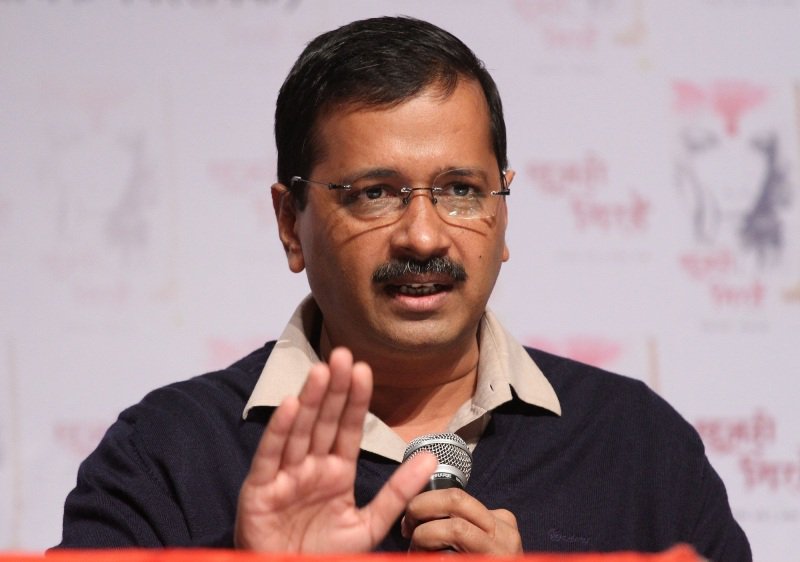Besides COVID, AAP govt grappled with riots aftermath in 2020
As the unlock process began in June, the AAP government was staring at another major crisis of depleted revenue and reviving citys badly-hit economy due to closure of markets, industries and service sector establishments for months.The Kejriwal government started the financial year on an ambitious note presenting in March a budget of Rs 65,000 crore for 2020-21 which was over 8 per cent higher than the budget estimates of Rs 60,000 crore in 2019-20.

- Country:
- India
Arguably the most challenging year for any government due to COVID-19 pandemic, 2020 was more so for the AAP government that took over reins of Delhi for the third time in a row amid growing severity of the deadly virus and brewing tensions due to anti-CAA protests and riots in the city. Days after Arvind Kejriwal took oath as chief minister of Delhi for third time on February 16, the northeast district in the city saw a massive communal conflagration that claimed over 50 lives, left scores injured and damaged public and private property worth crores of rupees.
As the Kejriwal government was grappling with the aftermath of the communal violence by extending immediate relief and rehabilitation work, another challenge before it was the pandemic that led to a nationwide lockdown in the third week of March. The government handled the mass exodus of migrant workers from the city due to the lockdown by setting up shelters and feeding the needy who were caught unawares and stared at starvation due to loss of work.
Hundreds of centres opened across the city provided free meals to the needy while the AAP government also distributed free ration to nearly 71 lakh people. With rising number of infections and deaths through summer months, the Kejriwal government came up with its 'Delhi Model' emphasising on tracing, testing and home isolation as well as plasma therapy to contain the pandemic.
Enhancing testing capacity, readying more hospital beds for infected, putting in place logistics and arranging a huge workforce including health workers were some of the tasks the Delhi government was involved with during most part of 2020. As the unlock process began in June, the AAP government was staring at another major crisis of depleted revenue and reviving city's badly-hit economy due to closure of markets, industries and service sector establishments for months.
The Kejriwal government started the financial year on an ambitious note presenting in March a budget of Rs 65,000 crore for 2020-21 which was over 8 per cent higher than the budget estimates of Rs 60,000 crore in 2019-20. However, with tax revenue plummeting and economic activities at a standstill, the government in May was forced to demand a grant of Rs 5,000 crore from the Centre to pay salaries to its employees. The revenue collection was down by over 50 per cent in September. With the financial crisis hampering progress various projects and programmes, Kejriwal and his deputy and Finance Minister Manish Sisodia asked the Centre to compensate GST shortfall. A special fee of 70 per cent on sale of liquor, hike in VAT of petrol and diesel were other moves by the government to boost revenue.
Batting for lifting of lockdown restrictions to revive the ravaged city economy, Kejriwal government also undertook steps to help the industries and markets to resume economic activities. The government launched 'Rozgar Bazaar' employment portal, permitted hotels and restaurants to operate 24 hours, and relief in fixed charges to industrial and commercial consumers. In a major policy shift in its policy, the Kejriwal government in November decided to allow only hi-tech and service sectors to set up units in new industrial areas to be opened by it. It also decided to help and encourage the manufacturing units in existing industrial areas to switch to hi-tech and service sector enterprises.
In transport sector, the Delhi government notified its ambitious Electric Vehicle policy in August, aiming at having an electric vehicle market share of 25 per cent across all new vehicle sales in Delhi by 2024. The transport department also moved to procure more buses, including e-buses, e-ticketing in view of the pandemic and launching trial of hydrogen enriched compressed natural gas for public transport buses. In the new year, the Delhi government has its task cut out to smoothly administer COVID-19 vaccine to around two crore people in the city and to take a decision about opening of schools and colleges that are closed since March.
(This story has not been edited by Devdiscourse staff and is auto-generated from a syndicated feed.)
- READ MORE ON:
- Delhi Model'
- Arvind Kejriwal










